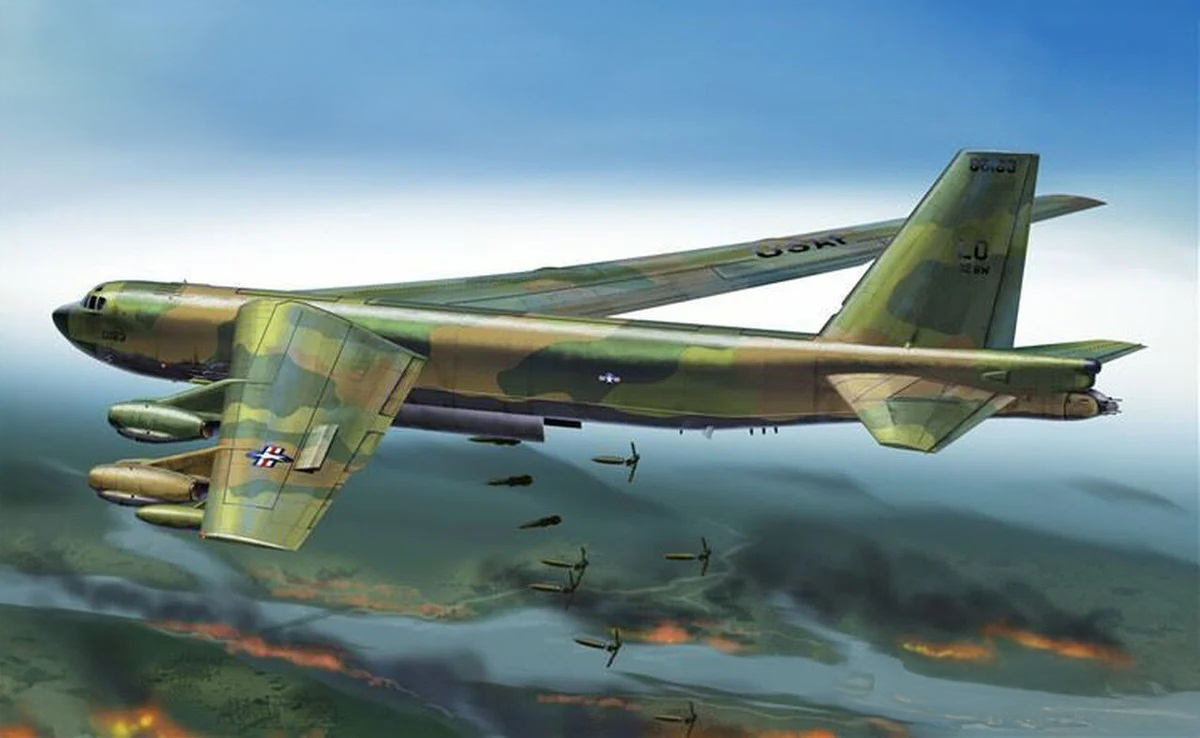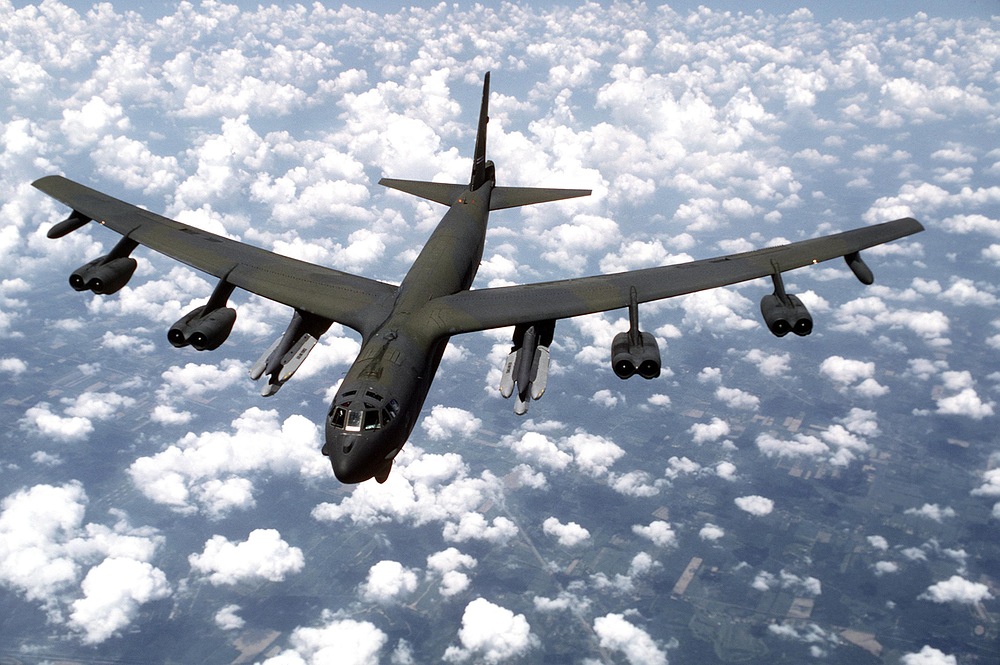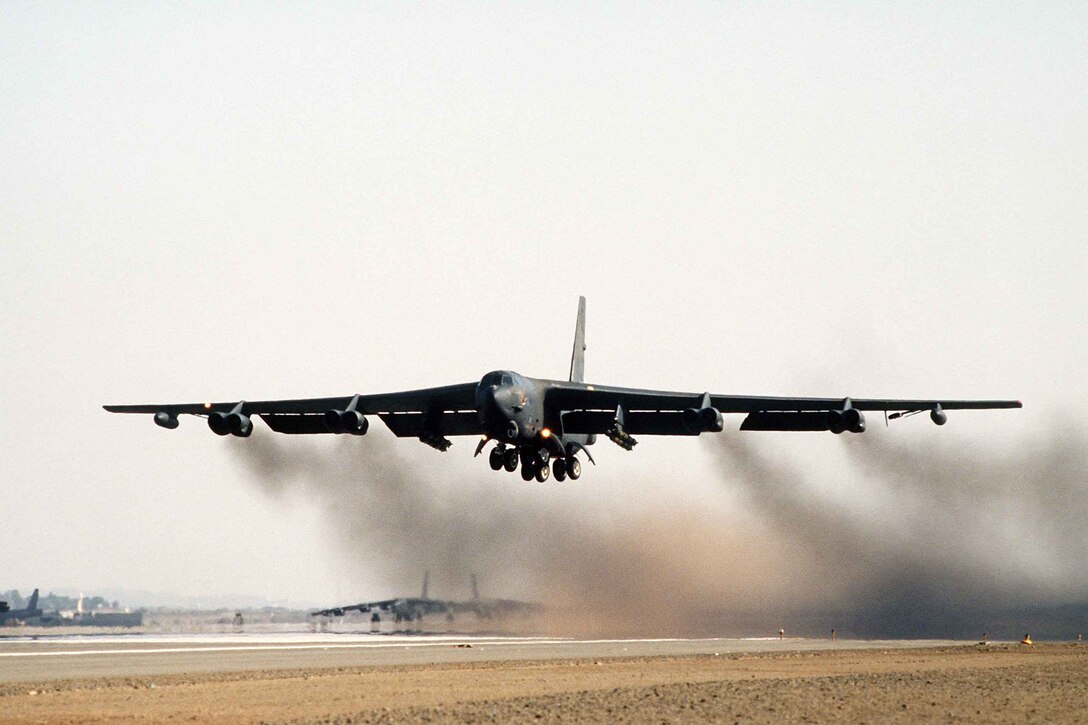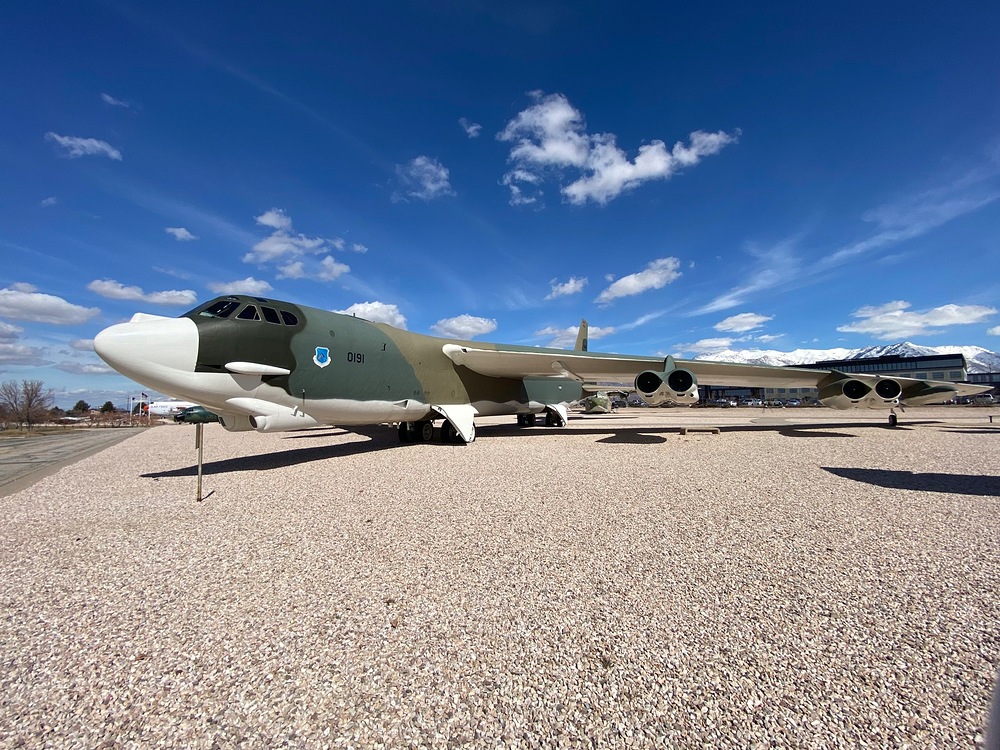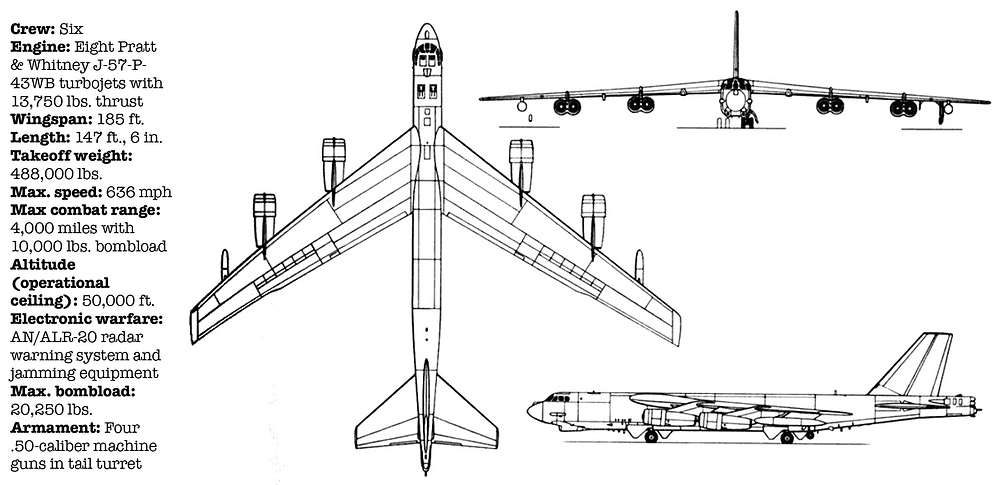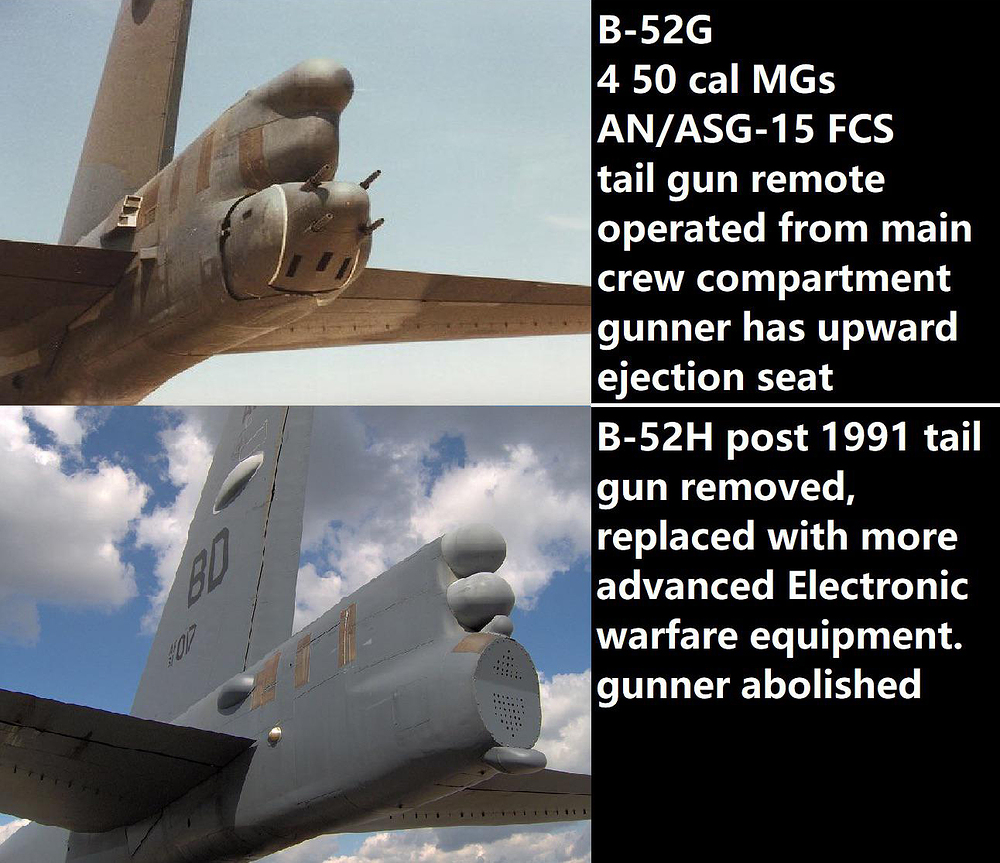When I saw the B-52G Stratofortress being ranked #1 on shows like Top Ten Bombers and Greatest Ever Bombers , it became my Goal to obtain it in these two games: World of Warplanes and War Thunder. It’s just such a distinctive plane—not only does it look unique, but it can fly incredibly long distances without needing to refuel. It’s not just another plane—it stands out for its unique look and its ability to fly incredibly long distances without stopping. During the Cold War, this Bomber was a huge deal and played a major role in all kinds of missions. Even after that time, the B-52G kept on making its case until retirement. It still gets talked about today because it was such a game changer. The B-52G was introduced into service in 1959, and it soon became an important part of the USAF’s Strategic Air Command (SAC) and a symbol of American determination and commitment to global peace and stability during the globally uncertain post-WWII Cold War period.
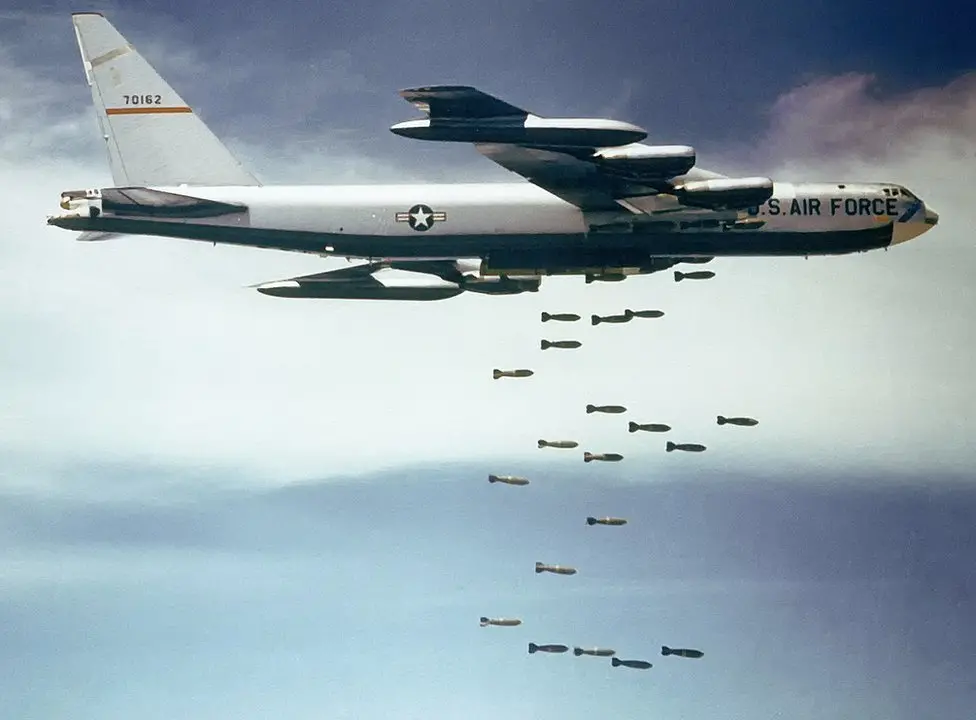
The B-52G helped protect the United States during the Cold War. For example, during the 13-Day Period of the Cuban Missile Crisis from October 16-28, 1962, the bombers were on alert, ready for launch, to help avoid a “Hot” war. If not for John F. Kennedy, who knows where we would all be now, because that time in the Cold War became was never Hot, thanks to him. Seeing B-52Gs flying overhead was a powerful reminder to the rest of the world that the U.S. meant business—and that probably helped prevent larger conflicts. Plus, these planes could cover massive stretches of ocean, assisting the Navy in tracking enemy ships and laying mines when needed.
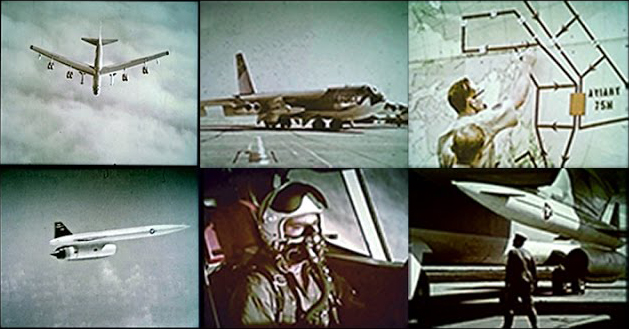
The B-52G wasn’t just about nuclear missions—it actually played an Important role during the Vietnam War too. The U.S. Air Force originally planned to utilize the B-52 to deliver nuclear weapons; it ultimately turned out to be an effective tool for dropping conventional munitions which proved to be a game changer in support of allied troops on the ground and created chaos for enemy forces, by attacking high-value targets. The B-52G flew a multitude of missions supporting Operation Arc Light, destroying enemy bases and supply routes throughout Vietnam, Laos and Cambodia. Notably, the B-52G played a crucial role in Operation Linebacker II in December 1972, which brought North Vietnam back to the negotiating table, leading to the release of American prisoners of war. The sheer scale of destruction that the B-52 could inflict earned it a fearsome reputation among enemy forces.
After the Vietnam War, the B-52G didn’t just fade away—it kept finding new ways to stay useful. In the 1980s, for example, it was updated to carry air-launched cruise missiles (ALCMs), which made it even more adaptable and practical. With that upgrade, the B-52G could hit targets from far away, making it safer from enemy defenses and upping its effectiveness.
The B-52G also played a significant role in Operation Desert Storm which lasted for 6 months, 3 weeks and 5 days from January 17th, 1991 to February 28th, 1991. B-52Gs launched the opening strikes of the campaign, firing Conventional Air Launched Cruise Missiles (CALCMs) at key Iraqi infrastructure and military targets in Saddam’s Iraq. The missions, some lasting over 35 hours and covering distances exceeding 14,000 miles, talk about setting a record for the most extended combat sorties in aviation history. During Desert Storm, the B-52G dropped a considerable amount of bombs by coalition forces. Just knowing those bombers were overhead was enough to shake up Iraqi troops—it really shows the psychological power of such an iconic aircraft.
The B-52 has been a workhorse of the U.S. Air Force for almost fifty years, but at the end of 1994, it was officially retired and took with it a legacy of excellence. But the B-52 spirit lives on, because the B-52H is still flying missions for the Air Force. It is funny to look back and reflect on the absence of the B-52G during the past half century. The B-52G may be viewed as a dependable, flexible workhorse over the years fulfilling its duties to add to the country’s defense according to the best of its ability. The inclusion of this aircraft and legendary Bomber in War Thunder may simply afford the players a safer, comprehensive opportunity to see just some of its unique capabilities and make all of its history enjoyable.
Key Features of the B-52G
The B-52G Stratofortress has had several changes and features that boost its operational effectiveness from both its previous version, the “B-52F Stratofortress,” and as time went by. These modifications include:
- Tail: The vertical stabilizer has fewer horizontal stabilizers. The design reduced the tail length by about eight feet and increased the chord to improve stability and control of the aircraft.
- Fuel System : The wings include sealed fuel cells, or a “wet wing” design, which increases the airplane’s fuel capacity and overall efficiency.
- Crew Positioning : The tail gunner was moved from the tail to a control station in the crew compartment. This new position improves the aircraft’s design and enhances crew collaboration before, during, and after missions.
- Armament : The B-52G can carry over 50,000 lbs of ordnance from a variety of weapons, including:
- 20 AGM-86 Air-Launched Cruise Missiles (ALCM)
- AGM-28 “Hound Dog” missiles
- GAM-87 “Skybolt” missiles.
- Engine Specifications : The B-52G features eight Pratt & Whitney J57-P-43WB turbojet engines, providing 11,200 lbs of thrust in dry conditions and 13,750 lbs with water injection.
- Operational Performance :
- Maximum speed is 634 mph (551 knots) at 20,800 feet.
- The cruising speed is 526 mph.
- The aircraft has a maximum range of 7,300 miles and a combat radius of 3,600 miles, enabling long missions without needing in-flight refueling.
- The service ceiling is 47,000 feet.
- Physical Measurements :
- Wingspan: 185 ft 0 in
- Length: 160 ft 11 in
- Height: 40 ft 8 in
- Maximum Takeoff Weight: 488,000 lbs
- Crew : The B-52G operates with a crew of five or six, including a pilot, co-pilot, electronic warfare officer (for those who want advanced electronic warfare capabilities), navigator, radar navigator/bombardier, and a tail gunner.
This aircraft combines advanced engineering with combat capabilities, enhancing the overall landscape of modern air power.
Standoff Weapons
B-52Gs can carry various standoff weapons, enabling attacks on targets from a safe distance. Examples include:
- AGM-86 ALCM (Air-Launched Cruise Missile) : B-52Gs can carry a maximum amount of 20 AGM-86 ALCMs, which can be nuclear or conventional. (The choice depends on whether the player wants to select it or if the developers of War Thunder decide to include nuclear weapons.)
- AGM-154 Joint Standoff Weapon (JSOW) : These are precision-guided glide weapon for targeting.
- AGM-158 JASSM (Joint Air to Surface Standoff Missile) : These are known for there stealth capabilities and precision targeting.
- GBU-31 and GBU-32 JDAM (Joint Direct Attack Munition) : These guided bombs (also known as smart bombs, guided bomb units , or GBUs ) are GPS-guided bombs designed for depth, designation, and overall targeting accuracy.
These weapons will improve the B-52G’s effectiveness in various mission sets.
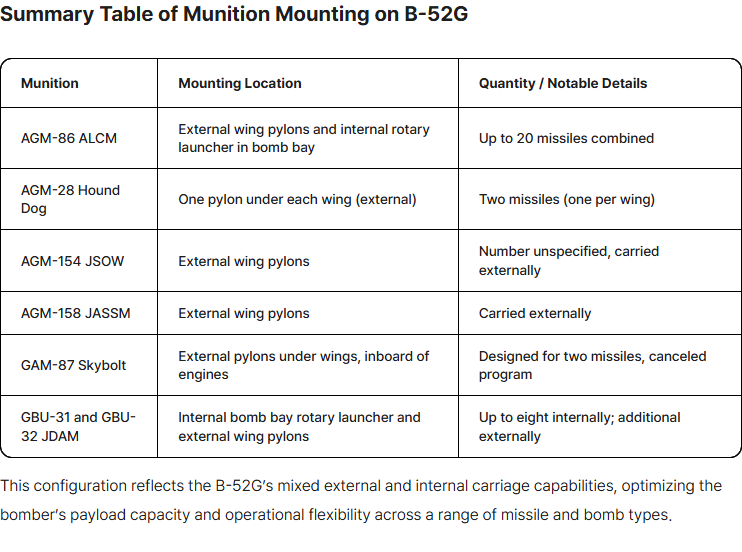
Defensive Armament
The B-52G will have protection in the form of a tail gun with four .50 caliber M2 Browning guns. The Gunner’s station will help the player in survivability while operating a B-52G through an Aerial battle.
Unique Gameplay Mechanics
- Standoff Weapons : The B-52G may be armed with a variety of stand-off weapons. Those include cruise missiles, precision-guided bombs, sophisticated electronic warfare equipment and nuclear weapons.
- Strategic Bombing : The B-52G is capable of performing long-range attack against ground targets and can engage a high number of ground targets thanks to its advanced equipment.
Advantages in Battle Context
The B-52G Stratofortress was developed for long-range bombing missions, not for dogfighting with the enemy. The B-52G has two primary roles that provide aspects of long-range bombing, which include:
- Standoff capability – It’s the ability to launch cruise missiles from a distance ensures the safety of the aircraft.
- Heavy payload – the capacity to carry a significant amount of munitions for various missions.
The B-52G is an effective aircraft that can support long-range bombing missions. It was designed to deliver robust weapon systems over the target area, allowing operators to strike from a safe distance. This ability is demonstrated by the B-52G’s payload and its standoff capability.
Balance Considerations
Balance concerns : We need to fix balance purely with the meta of High Altitude Operations . Assuming a cruise ceiling for the B-52G, designed for high altitude operations, will be much improved over present B-52s and provide a level of protection that, if any, threat to the B-52G fleet will be extremely limited." and "Because the B-52G can flew all of its missions at high levels, the reduction in its vulnerability is of such magnitude it would have to be considered as providing an additional level of operational safety and effectiveness.
Clarification on B-52 Variants
The B-52G Stratofortress was quite different compared to its predecessors, the B-52D (which was requested in the Forum as well), the B-52E and the B-52F . The G version was not a refinement; it was a new airplane that specialized in nuclear strike missions. The “wet wing,” which let it fly even farther, was one of the more significant alterations made to the G version. However, the design did make the plane somewhat more susceptible to fatigue over time. The B-52G bomber underwent significant modifications, which included relocating the tail gunner’s position to the front of the aircraft.
All G models were constructed at the Boeing facility in Wichita, Kansas, formerly known as Stearman Aircraft. In 2005, the Boeing facility in Wichita was sold and is now known as Spirit AeroSystems. Although Boeing was in the process of acquiring Spirit AeroSystems, which would reintegrate the two companies, it ultimately sold its Wichita commercial airplane division to Onex Corporation, leading to the creation of Spirit AeroSystems. The plant is located at 4200 S SE Dr, Wichita, KS, for those interested in visiting the site.
B-52G In the Cold War, the B-52G was a significant bomber thanks to a number of crucial upgrades. Among others were improved avionics as well as an increased maximum take-off weight and a number of design improvements. These modifications distinguished the G model from earlier versions, the D, E, and F models.

Conclusion
I’m really looking forward to the (possible) addition of the B-52G Stratofortress to War Thunder. This suggestion seems like it could be a huge change, introducing new concepts to the game. And I personally can imagine The difference such key plane’s appearance would make to our game, adding to it the strategic part of it, I believe the players would appreciate it. Imagine what that could do for the overall gaming experience!
Community Support
I’m really excited to hear your thoughts on the upcoming addition of the B-52G Stratofortress in War Thunder. This iconic aircraft is sure to bring a unique dynamic. I can’t wait to see how it will be integrated into the game.
What features or special abilities do you think will make the B-52G stand out? Let’s have a lively discussion where we can share ideas, suggestions, and anything else that might spark interesting insights and start a great conversation.
I’m eager to read all your opinions and can’t wait to see what you all think!
Would you like to see the B-52G Stratofortress in War Thunder?
- Yes
- No
0
voters
I’m eager to know what you think about this. Your point of view is so cool for me. I’m curious to know what you think and how you feel about it. I would be grateful if you would consider my request. I’d love to hear what you think, since I can’t wait to find out what you all thought. Thank you for taking it into consideration and let’s build it together!
Best regards,
CaptMacGyver
References:
- Boeing B-52 Stratofortress - Wikipedia
- B-52 Stratofortress > Air Force Global Strike Command AFSTRAT-AIR > Display
- Boeing B-52G Model Stratofortress | Air Force Armament Museum Foundation
- Boeing B-52G Stratofortress | The Museum of Flight
- B-52 Stratofortress > Andersen Air Force Base > Display
- Weapons - B-52 Stratofortress | The Gulf War | FRONTLINE - PBS
- Operation Arc Light: The Role of B-52 Bombers in the Vietnam War - Ghosts of the Battlefield
- Operation Secret Squirrel: the story of the top-secret ultra-long range B-52 Stratofortress mission that opened strikes of Operation Desert Storm - The Aviation Geek Club
- Desert Storm: 2nd Bomb Wing leads the air war > Air Force > Article Display - AF.mil
- Operation Senior Surprise - Wikipedia
- Operation Secret Squirrel, Callsign Doom-32, Desert Storm, B-52G Livery (Semi-Fictional)
- J57 Pratt for sale - eBay
- First of 18 heavy bombers retires, Tinker keeps remainder of maintenance
